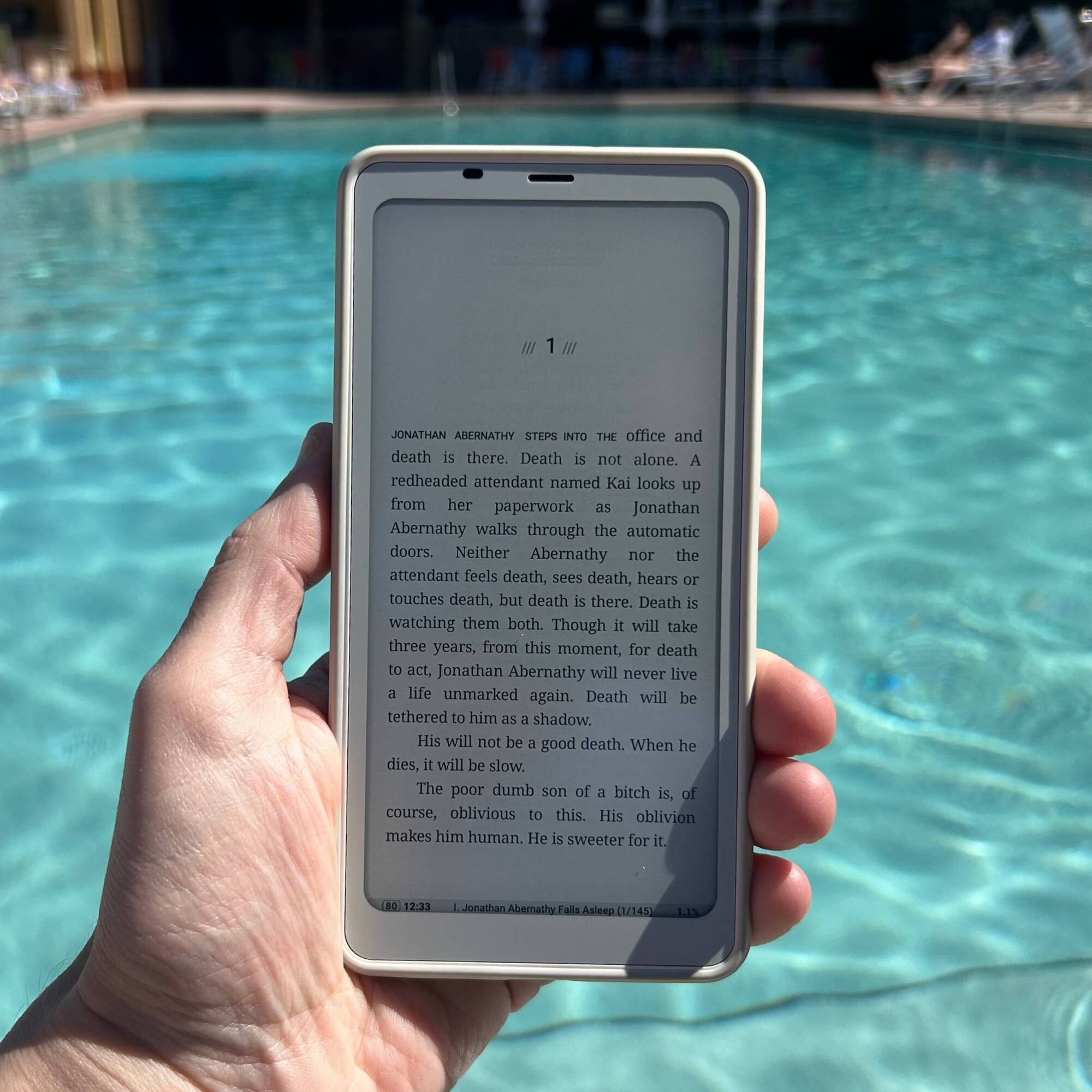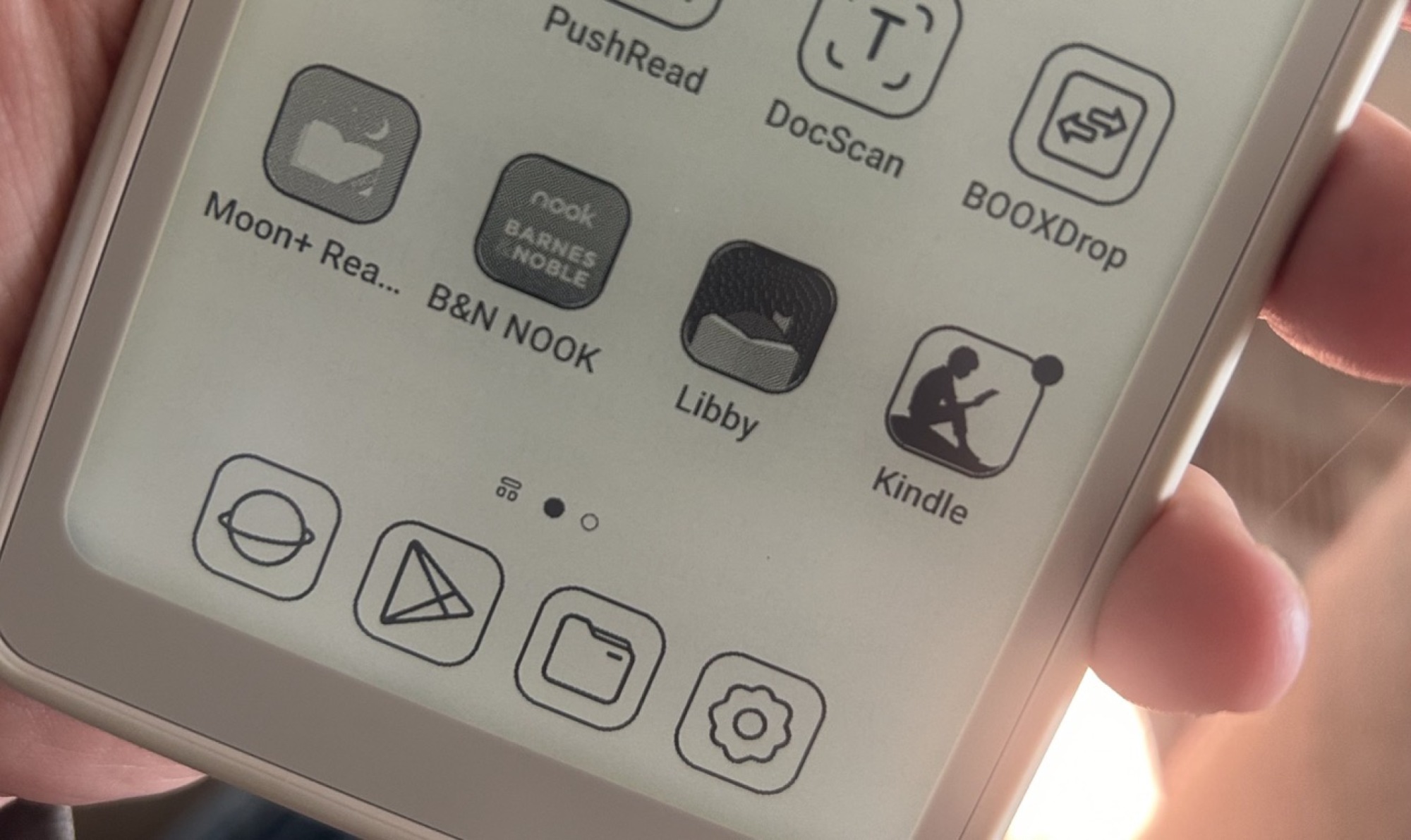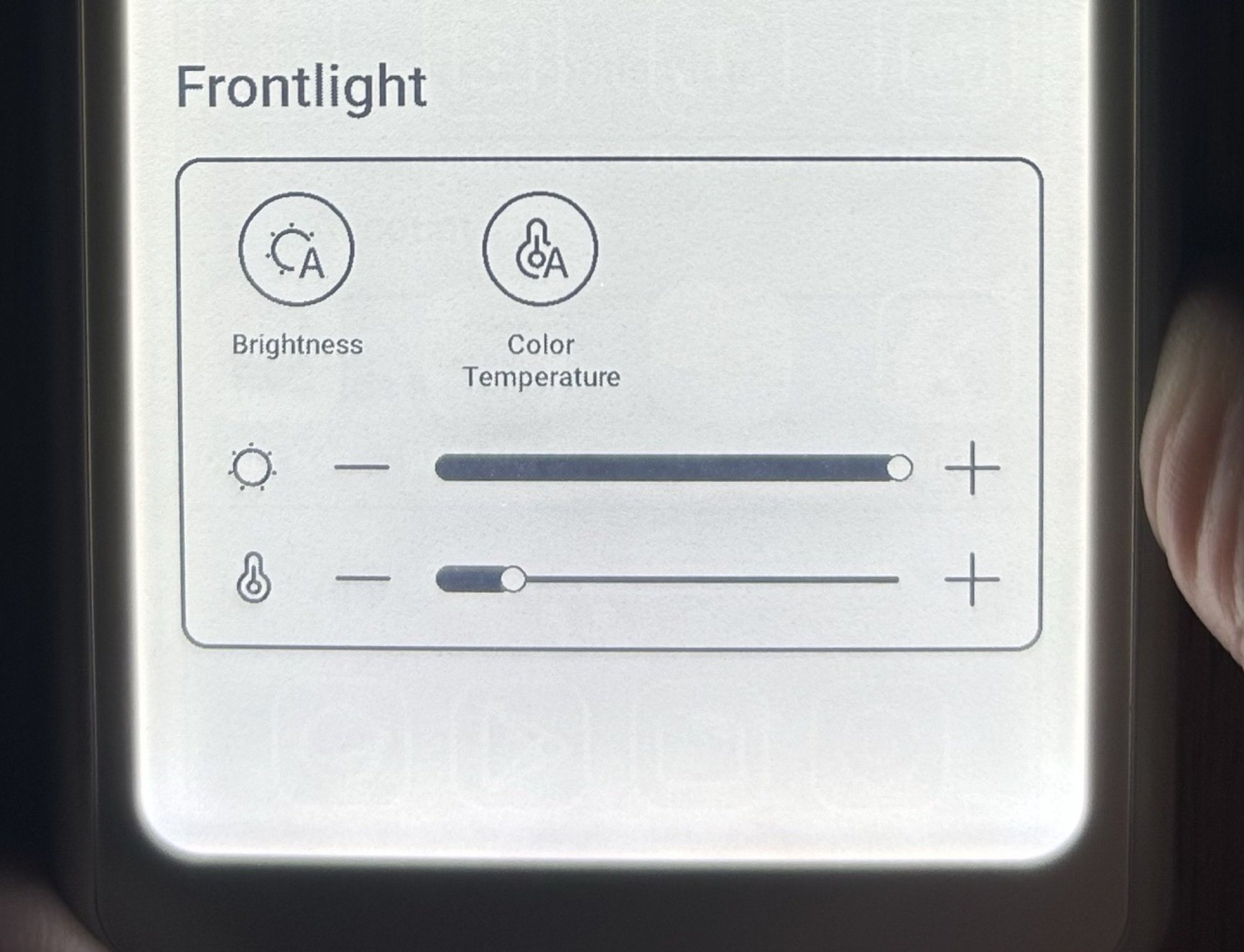The Boox Palma Is a Nearly Perfect Phone-sized E-reader
2024-03-03 / News / 9469 Sees / 0 Comments
If you've ever owned a dedicated e-reader with a grayscale e-ink screen (as opposed to a tablet with a backlit LCD screen), chances are good it was one of the many varieties of the Amazon Kindle. Barnes & Noble is still making Nooks, but few people buy them, and you have to have done your research to have even heard of wannabe Kindle killers from the likes of Kobo (a Canadian company owned by the Japanese retail giant Rakuten).
But if you're going no farther than the latest iteration of Amazon's e-reader, you're missing out on some of the best devices on the market—even if they're from companies you've never heard of, like Onyx International, a Chinese tech firm that's been making e-ink devices since 2011. I still remember the first time I saw someone reading an Onyx Boox tablet on the subway; my assumption was that it was a cheap knockoff (c'mon...Boox?). I was wrong. Not only are companies like Kobo and Onyx regularly trumping Amazon when it comes to variety and innovation in their e-readers, their devices are regularly just better: not locked down to a proprietary operating system or a particular e-book store, and much more flexible and customizable, without the need to jailbreak the onboard software as you would a Kindle's.
With all of that said, for the past month or so I've been testing out the Boox Palma, the phone-shaped, Android-based e-ink device Onyx dropped last year, and it's the best e-reader I've ever used.
An e-reader that looks (and almost works) like a phone

I've owned a lot of e-readers over the years, ever since my parents gifted me a third-generation Kindle (the one with the keyboard) way back in 2010. I've always found the proportions of the standard 6-inch e-reader screen a little awkward—too squarish to feel like an actual book, and too big to easily fit into a pocket. For a while I used a larger 7.8-inch Nook Glowlight Plus, and while the extra screen real estate was nice, it was hampered by slow software and difficulties loading library books.
All of my device hopping means my e-book library is split across retailers and devices. Thus, like many people, I often found myself reading on my phone, which is always with me, can handle both the Kindle and Nook apps, and is well-integrated with my library's app-of-choice, Libby. The downside: It's my phone, which means it's constantly pinging me with notifications or distracting me with social media when I mean to be reading.
Enter the Palma, which is basically the same size as an iPhone 15 Plus. It's easy to slip into my pocket, it mirrors the screen size I've gotten used to from my years of reading on a phone screen, and yet it still has the benefits of a black-and-white e-ink display—which for me means more immersion into whatever I'm reading, and less risk of distraction.
Android gives you freedom
My biggest beef with my various Kindles and Nooks was the fact that I don't particularly love the user experience for either device—generally, I think the Kindle and Nook iPhone apps work a lot better than the stodgier e-reader versions.
The beauty of the Palma is that on the operating system level, it basically is a phone, running a straightforward version of Android 11. This means instead of resigning yourself to an on-device OS for reading and sorting your books, you can choose whichever app(s) you like best, as long as they're available for download in the Google Play store (sorry, Apple Books readers), no jailbreaking or side-loading required (though you can certainly do the latter if you like).

I currently have installed the Kindle, Nook, and Kobo apps, as well as the Libby app (for reading library books from the Brooklyn Public Library), plus a format-agnostic app called Moon+ Reader that I highly recommend if you want more customizability in your reading app, from font choice to kerning to file sorting and more. The point is, any and all of these apps are open to you—though Onyx has its own default reading app, you are in no way railroaded into using it.
Listen to your audiobooks and podcasts too
Android support means you can also use the Palma to listen to your audiobooks—there's no headphone jack, but it will pair with your Bluetooth headphones easily enough. I tested out syncing audiobooks via Audible and the Kindle app, and it worked as expected, and there's enough onboard storage—128GB—to hold an awful lot of audio material. (I'm not a heavy audiobook listener, but I did download Pocket Casts to try out the Palma as a podcast machine. In short: It works well, but I still prefer my iPhone for that, as it syncs with my Apple Watch and more readily connects to my Beats earbuds.)
Add fonts, screensavers, and more with ease
My favorite thing about the Palma is I can plug it into my laptop and easily sideload books, upload new fonts, and anything else you can accomplish via drag and drop. The Android OS isn't shy about letting me see the file structure and put things exactly where they need to go. The end result is, if you're willing to put in a little effort, you can create a truly custom experience. Set your own lock screen, choose your own wallpaper, read in Wingdings: The possibilities are endless.
Snappy performance
With 6GB of onboard RAM, the Palma is certainly fast enough to deliver your e-books at a clip, and turning pages or skipping through chapters rapidly is no problem. Navigating around a PDF is pretty smooth too: Provided the app allows it (as does the native PDF reader, Neo Reader), you can pinch to zoom in and out and enjoy near-instantaneous performance, which is much more than I can say for trying to magnify a PDF on my old Nook.
The device also lets you browse the internet with minimal lag, and apps load quickly enough that I never felt like I was using a lesser device.
Good (but not exceptional) battery life
One of the benefits of e-readers is that their basic displays sip power instead of gulping it. And while the Palma will go a lot longer between charges that your smartphone, in my anecdotal experience (I didn't run a dedicated battery test) it doesn't last quite as long as a Kindle. Using it for an hour or two a day with the frontlight on throughout would drain the battery by half in less than a week. Once plugged in (via USB-C), it charges pretty fast.
More than an e-reader (but still not a true phone)
Android support means you can download more than reading apps. You can also download Goodreads, or Gmail, or Chrome, or X/Twitter, or Reddit, or anything else you want. And unlike the extremely clunky screens on most e-readers, which suffer from severe lag that makes even scrolling a webpage unpleasant, the Palma offers four different refresh modes, from HD (best for reading super-crisp text on a static screen, as when reading a novel), to Balanced (for scrolling through PDFs), to Fast or Ultrafast, which can handle scrolling through your social media feeds with responsiveness close to what you'd get with an LCD screen.
On a Kindle, doing anything but reading feels like a chore, but it actually is feasible to browse the web and even watch videos on the Palma. Everything will still look a bit grainy, and of course it's all in grayscale, but considering I could barely read my email on my first Kindle's "experimental" web browser, I'm still pretty impressed. I even downloaded a Tetris app, which functions surprisingly well in Ultrafast mode.
I would never suggest that using any non-reading app on the Palma is a great experience, but they will work, and in a way, their comparable ugliness to how they'd look on a full-color LCD is almost a boon—I'm using the Palma because I want to read more books, after all. If I wanted to be distracted by an immersive social media experience, my iPhone has me covered.
No SIM support
Though it looks and functions like an Android phone, the Palma can't replace yours, as it lacks SIM support (though it has a side-loading card tray, it accepts only memory cards up to 1TB). You can use it for phone calls over wifi via a supported app (like Google Voice)—the device has both speakers and a microphone in addition to supporting Bluetooth headphones. It will also run most messaging apps via wifi, though you may need a SIM-less phone number to get them up and running.
The lack of SIM support is hardly a dealbreaker for me, as I wasn't looking to replace my phone with an e-ink device. (If that's your goal, look to Hisense, another Chinese company that makes a number of e-ink mobile devices.)
No significant waterproofing
Also very un-phonelike, at least when it comes to modern flagship devices: Unlike the iPhone and most Android phones, the Palma isn't significantly waterproof. Yes, technically even iPhones are only "water resistant," but that translates to "they can survive being immersed in water for half an hour. The Palma is "water resistant" in that a few raindrops on the display won't hurt it, but the speakers and power port are sealed, which means if you drop this thing in the tub or the pool, there's a good chance it won't survive.
Waterproofing is hardly a universal e-reader feature—the entry-level Kindle doesn't have it—but it would be a welcome addition to such a pricey device.
A great one-handed reading experience
My mixed reactions to the Palma as an Android device aside, it excels as an e-reader. The form factor is what it is—I personally find the 6.13-inch screen very pleasant, and the 1648 x 824 screen resolution at 300 ppi means the text is always super crisp and readable, especially at HD resolution. The build quality feels good: the screen is "micro-etched glass" that mostly avoids issues with glare, the physical buttons are responsive and easy to click, and the back cover is lightly textured and easy to grip.
You have the choice of turning pages by either tapping the touch screen or using the physical buttons on the right hand side of the device, making it easy to read one-handed (especially considering how light it is—around 170 grams). Though support varies from app to app, most of the reading apps I've tried will turn pages forward and backward using the volume up/down button. You can also change your settings to read via infinite scroll using either your fingertip or the volume button.
An additional button on the left side can be mapped to a number of different functions based on a quick press, a long press, or a double tap. By default a single press will refresh the screen, which is handy if you frequently find yourself annoyed by the faint ghosting that can plague any E Ink screen, but you can also use it to turn pages, skip to the next chapter, and more.
A comfortable frontlight

The ghosting you see here can be solved for with a quick tap of the refresh button on the side of the Palma. Credit: Joel Cunningham
The frontlight on the screen is comparable to what I've experienced with other modern e-readers—you can adjust the brightness and the warmth to suit your comfort level—with perhaps a bit more of a visible "ring" around the edge of the screen than you'd see on, say, a Kindle Paperwhite.
I wasn't super impressed by the auto-brightness option, which purports to set the best brightness level based on your current lighting conditions. I found it tended to waffle back and forth between too bight and too dark, even as I sat unmoving in a dark room. It's easy enough to adjust the lighting manually that I wasn't much bothered by this, but it's worth noting (and turning off).
What else can it do?
After a month of testing, I feel like the Palma does everything I want it to very well, and a bunch of stuff I don't really need it to do surprisingly well. It also can do a lot more that I haven't even really tried, including scanning documents and taking photos and shooting video via the 16 megapixel rear camera (provided you download a camera app; there's no native default, which is odd). The pictures will look like crap on the device itself, but if you hook it up to your laptop to access them, they look as good as anything you'd take with a basic smart phone camera—not iPhone quality by any stretch, but why does an e-reader have a camera at all?
Risks to consider
The nice thing about a Kindle is if yours breaks, you can just call up Amazon customer service to get it fixed or replaced. With a Boox Palma, you won't have that luxury: Parent company Onyx is based in China, and Reddit's e-reading communities are riddled with reports of less-than-ideal customer service (though keep in mind most people don't post to Reddit about good customer service experiences). There's also the fact that, as a Chinese company, Onyx isn't subject to the same privacy restrictions and laws as Apple or Amazon, but that's a well of paranoia I'd rather not dip into. (As it is, the only thing anyone would learn from looking at my Palma is that I read a lot of science fiction.)
That said, if you're in the U.S., I would definitely recommend buying the device from Onyx's Amazon store. It's the same price and you get the usual benefits of Amazon, including Prime shipping and the option to reach out to their customer service if you have an issue with a shipment.
The bottom line
All of this functionality does come at a price—the device retails for $279, which is obviously much more than entry level Kindles, and in the same ballpark as the high-end (and now discontinued) Kindle Oasis. But all of these features, along with the form factor, also mean the Boox Palma is the best e-reader for me, and certainly the best e-reader I've ever used.
Boox Palma specs
Display: 6.13-inch, 824 x 1648 (300 ppi)
CPU: Qualcomm Octacore processor
RAM: 6GB
Storage: 128GB
Connectivity: Wi-Fi 5 (2.4/5GHz), Bluetooth 5.0
Lighting: Frontlight with temperature adjustment
Camera: 16MP rear camera
Operating system: Android 11
Battery/charging: 3,950mAh via USB-C
Size: 159 x 80 x 8mm
Weight: 170g
MicroSD card support
More about“”'s article.
The original address《The Boox Palma Is a Nearly Perfect Phone-sized E-reader》